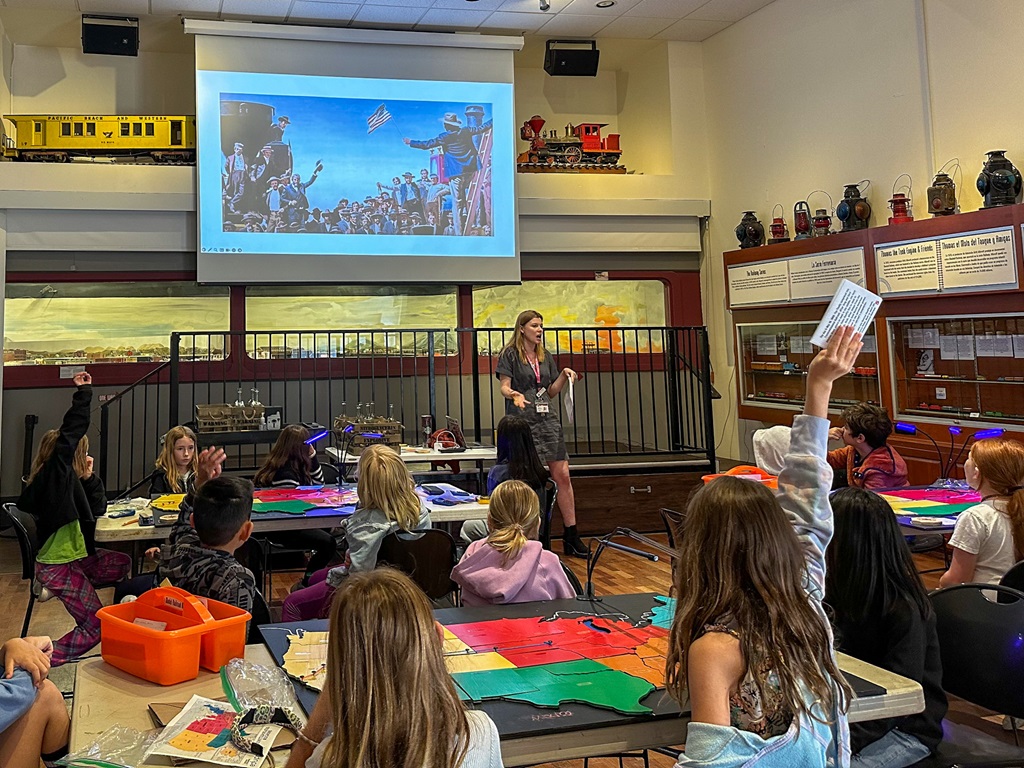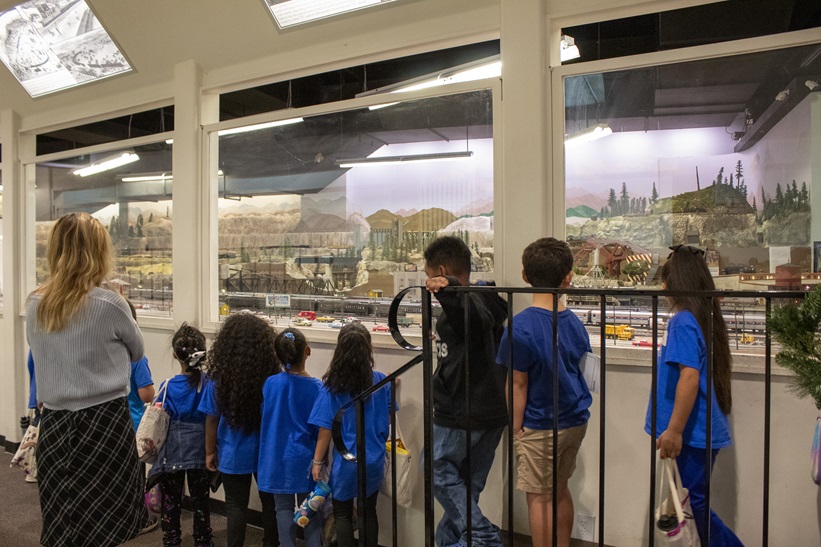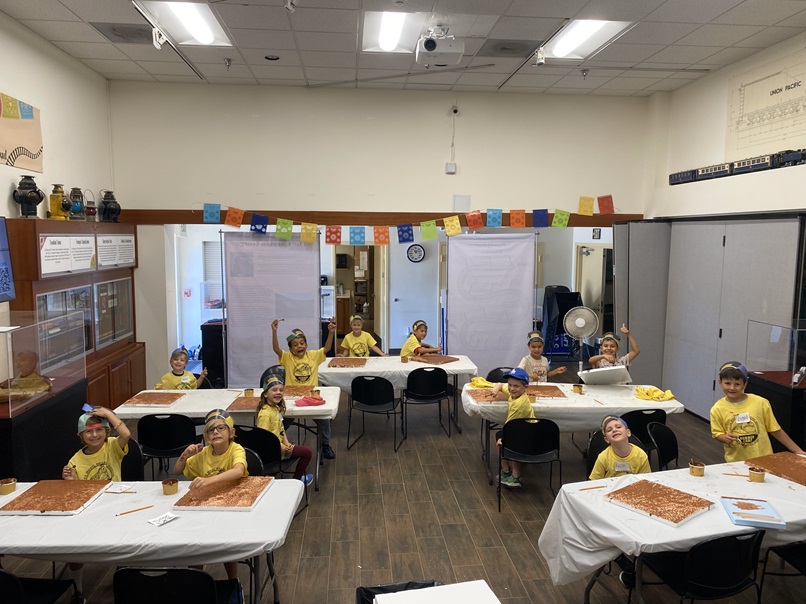
San Diego Model Railroad Museum: Inspiring Young Minds through STEAM Education
The San Diego Model Railroad Museum (SDMRM) offers children an immersive educational experience that goes far beyond the traditional museum visit. With over 27,000 square feet dedicated to model railroads, students can explore the intricacies of engineering and design in a hands-on environment. Under the guidance of Education Department Manager Celie Mitchard, the museum’s STEAM for School programs engage young minds through interactive workshops that spark curiosity and creativity, making learning both enjoyable and impactful.
Through these initiatives, children gain a deeper understanding of science, technology, engineering, arts, and math principles while working on projects like designing their own 3D models or experimenting with the physics of bridges. The SDMRM’s commitment to fostering a love of learning in students is essential in helping to cultivate the next generation of innovators and problem solvers, and it is our hope that the modest support from our Kars4Kids small grant program will help to ensure that even more children can benefit from these enriching experiences.
Kars4Kids: Can you tell us a bit about the San Diego Model Railroad Museum? When was it founded and by whom? What can visitors expect to see at the museum? How much does it cost to pay a visit to SDMRM?
Celie Mitchard: The San Diego Model Railroad Museum (SDMRM) offers visitors of Balboa Park the unique opportunity to explore over 27,000 square feet of trains, trestles, and tracks. The SDMRM displays six different operational model railroad layouts, owned and maintained by four local clubs in the San Diego area. Visitors walk through the gallery and observe hyper realistic model trains traveling along the tracks and take in the different replicas of scenery and charming vignettes on display. Our museum was established in 1982 and displays decades of design, construction, maintenance, and modeling that was completed by several generations of club members. Visitors pay anywhere from $10 to $20 depending on discount status, but kids ages 12 and under are always free in our museum. 🙂
Kars4Kids: SDMRM offers several educational programs for young people. When did you begin offering your STEAM for School programs? How many children are participating this year?
Celie Mitchard: Our STEAM for School educational program was first launched in 2018 and has been serving the different schools and classes of San Diego County for the past 7 years. In its beginning phases, we only offered one workshop and served a total of 757 students. To date, we now offer four expertly crafted educational programs that are written to serve the needs of students and their teachers. We are proud to have 1900 students from several different districts across San Diego County registered in our STEAM for School programming and are excited to continue to register even more as the school year continues.
Kars4Kids: Can you give us an overview of The Able Arch & the Trusty Truss? What can children expect to learn from this program and how does it tie in to train travel?
Celie Mitchard: In the Able Arch & Trusty Truss workshop, students learn about the physical science and history of arches and truss bridges. Students perform six experiments to discover and test the inherent strength of these two shapes and understand why civil engineers frequently use them in the design and construction of structures in general, and railroad bridges in particular. The critical concepts that are covered include Newton’s Third Law of Motion, gravity, normal force, compression, tension, balanced forces, and more. Students leave the workshop with a strong understanding as to why civil engineers repeatedly use arches and triangles in the construction of railroad bridges and draw connections to the different architectural structures on display at the museum.

Kars4Kids: Tell us about Communities Then & Now: Making a 3D Model. This program is specifically geared to younger children grades transitional kindergarten to second grade. How do you get such young children to understand the concepts of dimensions and 3D?
Celie Mitchard: Our Communities: Then & Now workshop blends California history, science, and model making to allow students to understand the different social features of their local community. This program has been designed to align with the California History Social Science Standards, along with the NGSS, to explore how we are alike and different from the people who lived in the past. This program features our unique collection of California model railroads to engage students in an exploration of the past and establishes an understanding of how some things change while others stay the same. Students leave the workshop with the ability to identify community elements on the different model railroad layouts and compare them with their contemporary equivalents. Students engage with the concepts of three dimensions by working on their own community models that they take home with them as a keepsake at the end of the day. Through tactile learning, along with several discussions led by instructors, students appreciate the value of a multiple dimensioned model over a flat picture or image.
Kars4Kids: Working with Scale is a program you offer for grades 6-8. What do the kids learn in this program? Do they have to be good at math in order to participate?
Celie Mitchard: In our Working with Scale workshop, students explore the concepts of scale and proportion, along with the relationship between ratios, fractions, and decimals. Students are led by instructors to identify the various scales commonly used in model railroading and learn how any object can be scaled up or down through proper calculation. During the workshop, students create their own three-dimensional robots to demonstrate the different scales and take their artistic creations back to the classroom with them. This workshop encourages students in grades 6-8 to build on the mathematical concepts learned in the classroom and pushes them to practice rations and fractions within the context of the railroad industry.
Kars4Kids: What can you tell us about your Transcontinental Railroad workshops for grades 3-5? This program focuses on history, correct?
Celie Mitchard: Our Transcontinental Railroad workshop is our most recent addition to our STEAM for school programming. Students learn about how the Transcontinental Railroad was the first ever continuous railroad line that spanned across the United States from coast to coast. In the hour-long workshop, students explore the critical concepts of map scaling and topography, state location and US regions, the Railroad Acts of 1862 and key players, governmental sponsorship and funding, environmental and social impacts, and the role the railroad line played in unifying the East with the West. The program highlights the points in which our California model railroad displays connect with the Transcontinental Railroad and educates students on local and national railroad history.

Kars4Kids: SDMRM offers STEAM programs four different ways: in-museum, in-class, virtual, and “unguided” field trip. What does an “unguided” field trip entail? Where have you taken the kids on these field trips? What do children get out of this experience?
Celie Mitchard: Our un-guided field trips allow students to explore the different gallery spaces and model railroad layouts at their own pace. We provide students and teachers with interactive scavenger hunts and self-guided tour packets that highlight the different features of the layouts and connect the objects on display in our museum to the STEAM related concepts learned in the classroom. This format allows kids to interact with our museum in a less structured pace, allowing them to take the lead in their own experience when visiting our museum.
Kars4Kids: Can you describe for us your model railroading summer camps? In general, there is no dearth of summer camps for kids. What sets your camp apart from the rest?
Celie Mitchard: Our summer camp programming introduces a range of ages to the basics of creating a model railroad. Younger campers create a smaller, non-operational layout, in which they practice the different techniques in creating scenery, while older campers collaboratively build a fully functional model railroad layout. Campers paint, plaster, lay track, and construct a miniature town that is decorated with buildings, trees, people, and of course trains. Additionally, throughout the week campers participate in behind-the-scenes tours of the different operational layouts in our museum. Our camps are exceptional because they are immersive and fully hands-on, allowing campers to work on a week-long project that they take home with them at the end of the week.
Kars4Kids: What’s next for the San Diego Model Railroad Museum?
Celie Mitchard: We are so excited to continue to expand and grow our educational programming. We are currently working towards reaching more students through the use of virtual programming, which is so generously supported by Kars4Kids. We are excited to offer fall, winter, and spring virtual camps this year, which is in addition to our normally scheduled summer virtual camp programming. Using the virtual format, we are able to reach larger audiences from across the United States, which allows us to introduce students from across the US to the unique STEAM related concepts on display in our museum. We are excited to continue to grow this program and are incredibly grateful for the support provided by Kars4Kids!